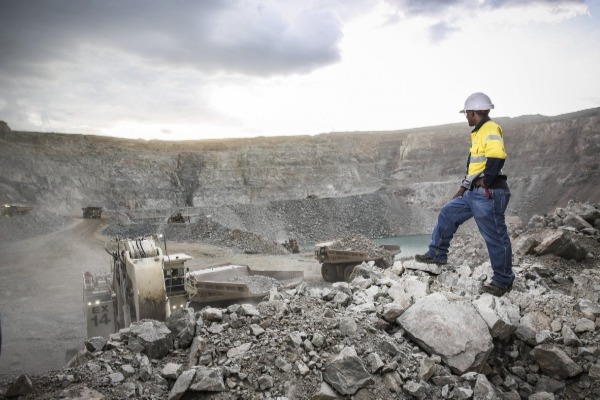‘Zim halfway towards US$12bn mining target’
Zimbabwe is on course to achieve the Government’s US$12 billion mining industry target by 2023, Mines and Mining Development Deputy Minister Polite Kambamura has said.
Deputy Minister Kambamura said Zimbabwe was halfway through regarding achieving the set targets, pointing out that the gold mining sector in general had blossomed over the last few years.
“Gold deliveries to the Fidelity Printers and Refiners topped 30 tonnes in 2021 on the back of sustained efforts to incentivise the industry. The sector is going to be instrumental in driving growth and at the moment, the industry is now valued at US$5,2 billion.”
He said the platinum group of minerals (PGMs) were set to catapult mining industry growth and accelerate the attainment of the set target over the next 10 months.
“The PGMs generated about US$2,4 billion against a set target of US$3 billion (in 2021) and there is no doubt that we will outperform the sector’s target. “We expect Great Dyke Investments to go online soon and further development of Bravura and Karo Resources to add to the mining sector’s continued growth,” Deputy Minister Kambamura added.
Great Dyke Investments, a consortium of Zimbabwean and Russian investors, last year opened two box cuts at its site in Darwendale, near Harare, expected to be operational by 2023.
Bravura, which is owned by a Nigerian investor, had also completed its drilling and was ready to open its first box cut Mines and Mining Development Minister Winston Chitando said last year.
He noted that Cypriot firm Karo Resources, partly owned by South Africa’s Tharisa Holdings, was completing its exploration.
In the coal and hydrocarbons sector, Minister Chitando said there are thermal power projects at various stages of development. The sector is expected to contribute more than US$1 billion to the mining industry target.
Chrome production has declined, although ferrochrome producing firms have increased or maintained production, Minister Chitando said.
He said Chinese-owned Afrochine Smelting had installed two more smelters at its plant in Selous, while Zimasco, one of the largest ferrochrome producers, has maintained its production capacity.
In the diamond sector, the Zimbabwe Consolidated Diamond Company (ZCDC), a diamond mining company wholly owned by the Government, is looking to produce 3 million carats this year, the Minister said.
Another diamond miner, Russian-owned Alrosa, is also developing its sites in Zimbabwe.
The mining industry currently generates more than 75 percent of the country’s total forex receipts while 2021 figures proved that the industry would be key in the journey towards realisation of Vision 2030.
Economic analysts have commended the Government for creating an enabling mining environment through incentives which have tripled gold production in the first month of the year.
The mining sector is one of the economy’s strategically key productive sectors expected to account for the largest contribution to the gross domestic product growth in the short to medium term.
To that end, the Government introduced incentives for gold and other precious metals, which have played a significant role in increasing productivity and putting a fatal blow to the scourge of stemmed smuggling.
Analysts also are optimistic that with production incentives put in place by the Government, the economy is well on course to reach its potential.
“The significant rise in gold deliveries to Fidelity Printers and Refiners is a direct result of policy clarity by the Second Republic and it is commendable from an economic standpoint,” said economist Dr Prosper Chitambara.
He, however, said the country needed to bring to speed the projects they are working on such as Great Dyke and hope that Arcadia will start production as quickly as possible for it to meet the target easily.
“As much as we anticipate to break the gold delivery records this year due to favourable payment conditions, it is the value addition of the mineral that we need to look at as a matter of urgency, as well as platinum refining,” he added.
“We are very much excited about the increased performance of the yellow metal on account of incentives which have proved that they can work wonders and therefore, they should be maintained for greater economic benefits,” another economist, Mr Paison Tazvivinga, said.
Under the US$12 billion mining roadmap, gold is expected to contribute US$4 billion, platinum US$3 billion, while chrome, iron, steel, diamonds and coal will contribute US$1 billion.
Lithium is expected to contribute US$500 million while other minerals will contribute US$1,5 billion.
The mining industry, the largest earner of foreign currency, is critical to Zimbabwe’s economy and the Government expects that by 2030, it will be generating more than US$20 billion.-The Herald










